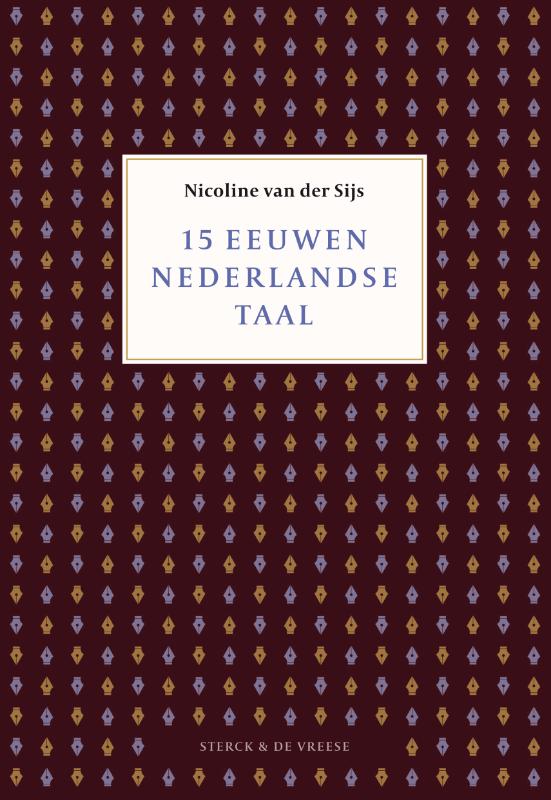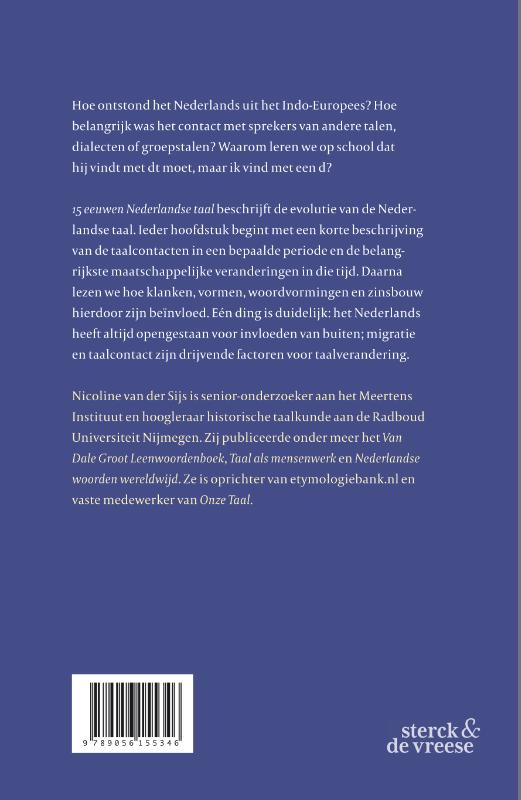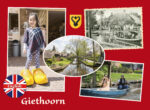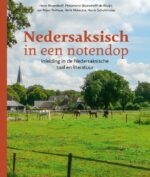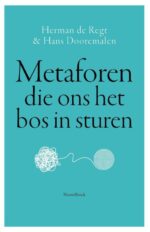15 eeuwen Nederlandse taal
€ 24,90
Hoe ontstond het Nederlands uit het Indo-Europees? Hoe belangrijk was het contact met sprekers van andere talen, dialecten of groepstalen? Waarom leren we op school dat hij vindt met dt moet, maar ik vind met een d? 15 eeuwen Nederlandse taal beschrijft de evolutie van de Nederlandse taal. Ieder hoofdstuk begint met een korte beschrijving
van de taalcontacten in een bepaalde periode en de belangrijkste maatschappelijke veranderingen in die tijd. Daarna
lezen we hoe klanken, vormen, woordvormingen en zinsbouw hierdoor zijn beïnvloed. Eén ding is duidelijk: het Nederlands
heeft altijd opengestaan voor invloeden van buiten; migratie en taalcontact zijn drijvende factoren voor taalverandering.
Nicoline van der Sijs is senior-onderzoeker aan het Instituut voor de Nederlandse Taal en hoogleraar historische taalkunde aan de Radboud Universiteit Nijmegen. Zij publiceerde onder meer het Van Dale Groot Leenwoordenboek, Taal als mensenwerk en Nederlandse woorden wereldwijd. Ze is oprichter van etymologiebank.nl en vaste medewerker van Onze Taal.
Gerelateerde boeken
-
Halfhaantje en de Hardrijder
De mooiste, grappigste en griezeligste volksverhalen uit Nederland en Vlaanderen€ 24,90 -
-
Nedersaksisch in een notendop
€ 22,95Het Nedersaksisch kreeg in 2018 nationale erkenning als volwaardige en zelfstandige taal.
In Nedersaksisch in een notendop beschrijven vijf kenners het Gronings, Drents, Stellingwerfs, Sallands, Twents, Achterhoeks en Veluws. Beknopt, maar wel in al hun facetten.
Aan de orde komen: de klanken, woordvormen, zinsbouwkenmerken en de grote woordenboekprojecten. Daarnaast is er veel aandacht voor de maatschappelijke positie, de beheersing en het gebruik van het Nedersaksisch.Kennisontwikkeling, aanmoediging tot gebruik en ook de zorg voor de taal zijn zaken die vooral in de verschillende regio’s plaatsvinden. Daarover biedt dit boek eveneens de nodige informatie, evenals over instituten en organisaties die zich met het Nedersaksisch bezighouden.
De Nedersaksische literatuur is overzichtelijk gepresenteerd naar periode en regio en de bronnenlijst nodigt de lezer uit zich verder in deze mooie, eeuwenoude taal te verdiepen.Nedersaksisch in een notendop is bedoeld voor mensen met een brede interesse in streektalen. Studenten Nederlands, Duits en Fries kunnen met dit boek hun kennis over het Nedersaksisch naar een hoger niveau tillen. Ook voor medewerkers van (regionale) taalinstituten kan dit boek een welkome aanvulling zijn op hun kennis over het Nedersaksisch.
